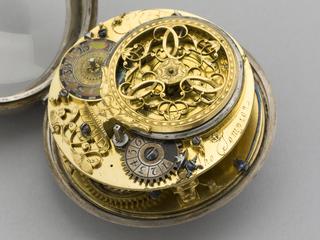
Drawing Representing Galileo's Proposal for the Application of the Pendulum to the Clock, 1659, copy
- maker:
- Vincenzo Viviani Vincenzo Viviani

Copy of the drawing representing Galileo's idea of the application of the pendulum to the clock, 1659.
This copy of a drawing made by Galileo's (1564-1642) friend and biographer, Viviani (1622-1703) shows the incomplete pendulum clock, which Galileo designed just before his death. It represents the first known attempt to apply a pendulum to control the rate of a clock. Galileo had observed that the time taken for a pendulum to complete one swing was almost independent of the arc through which it swung and he had used a freely swinging pendulum to time various astronomical events. He recognised the potential of using a pendulum to control a clock but died before his work could be completed. It was Huygens (1629-1693) in The Hague, Holland, who eventually built the first successful pendulum clock in 1656.
Details
- Category:
- Time Measurement
- Object Number:
- 1876-70
- Materials:
- paper (fibre product)
- Measurements:
-
overall: 500 mm x 420 mm
- type:
- drawing
- credit:
- Reale Instituto di Studie Superiori




